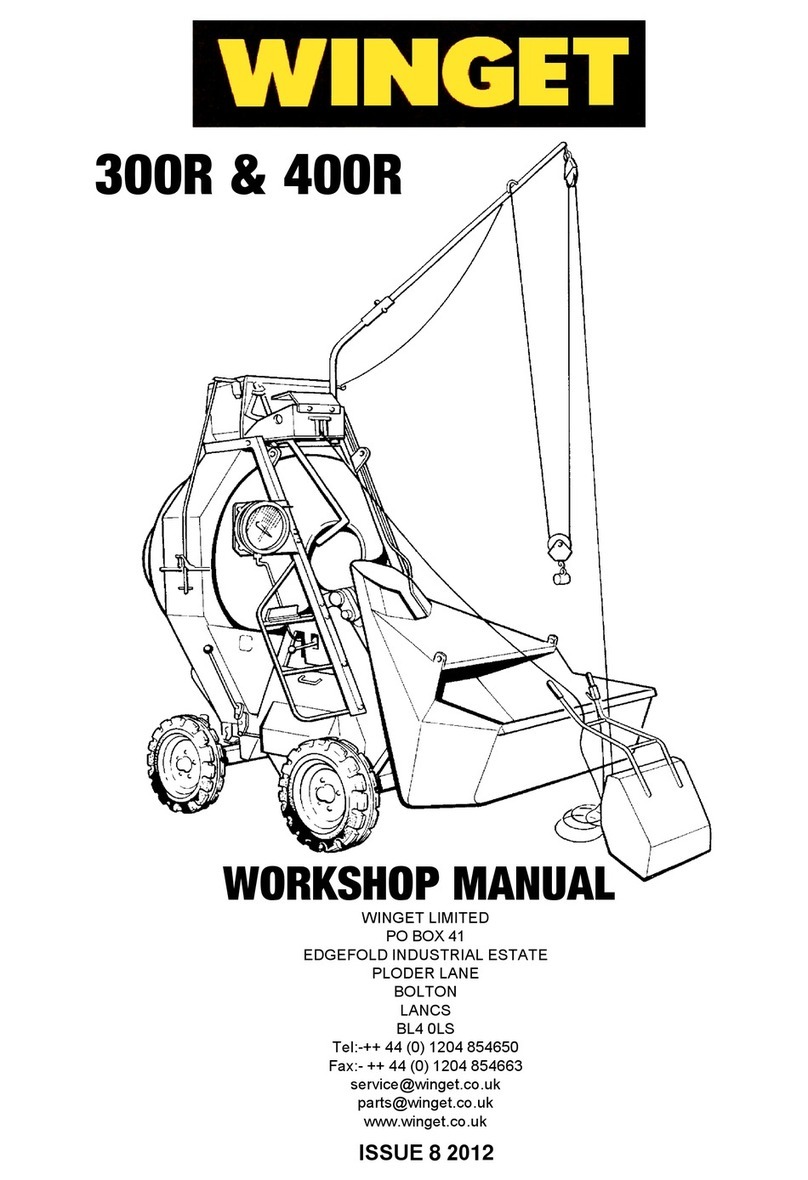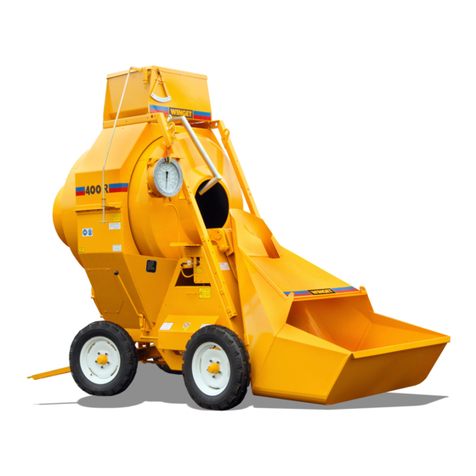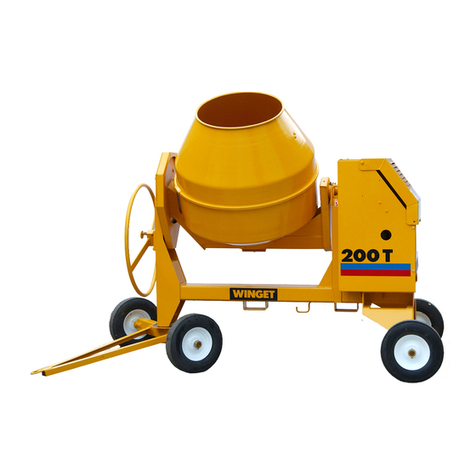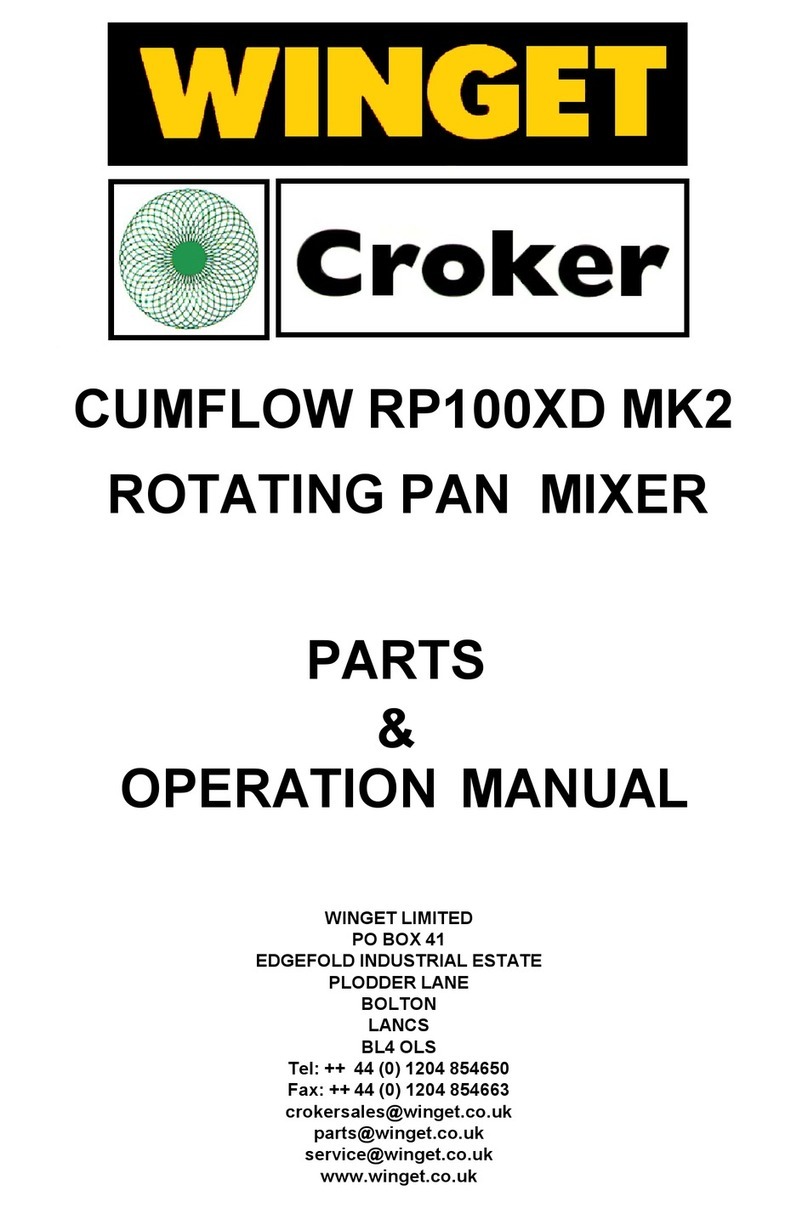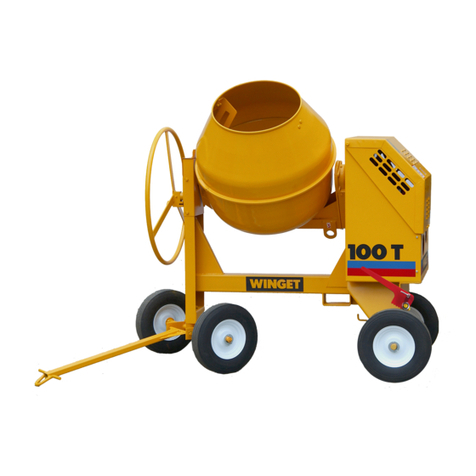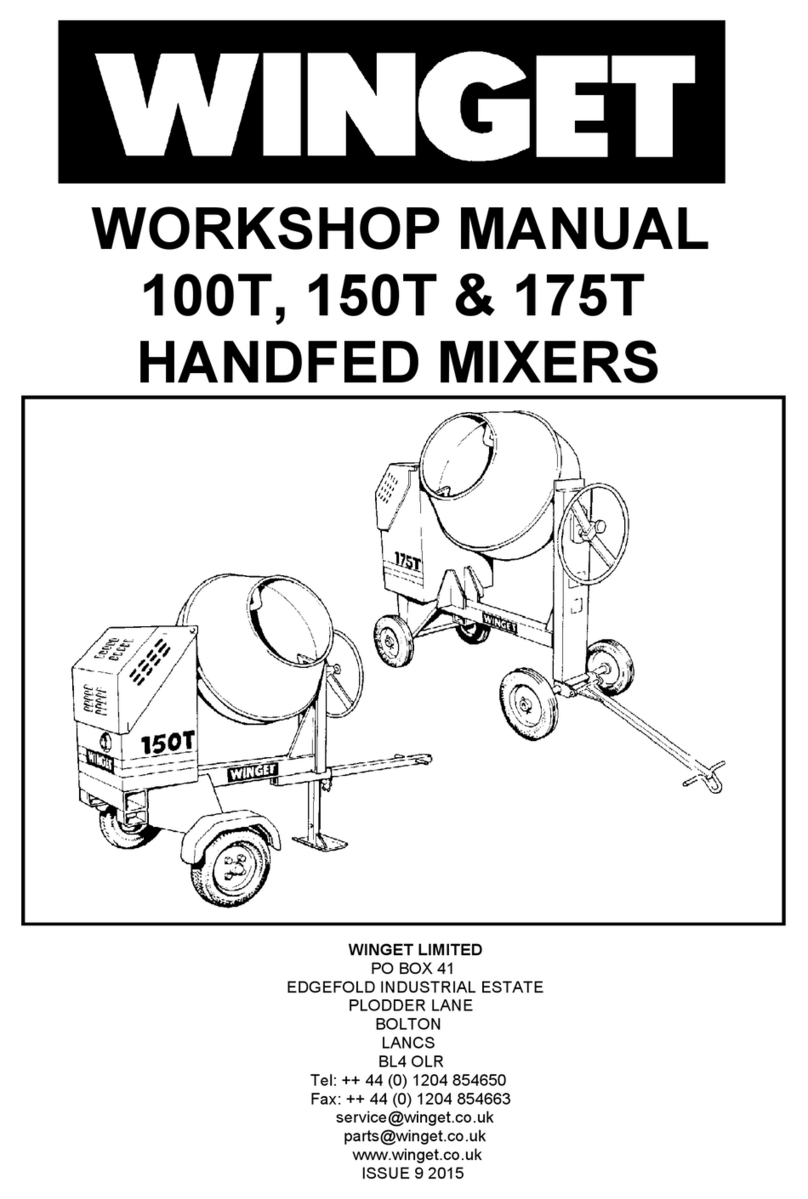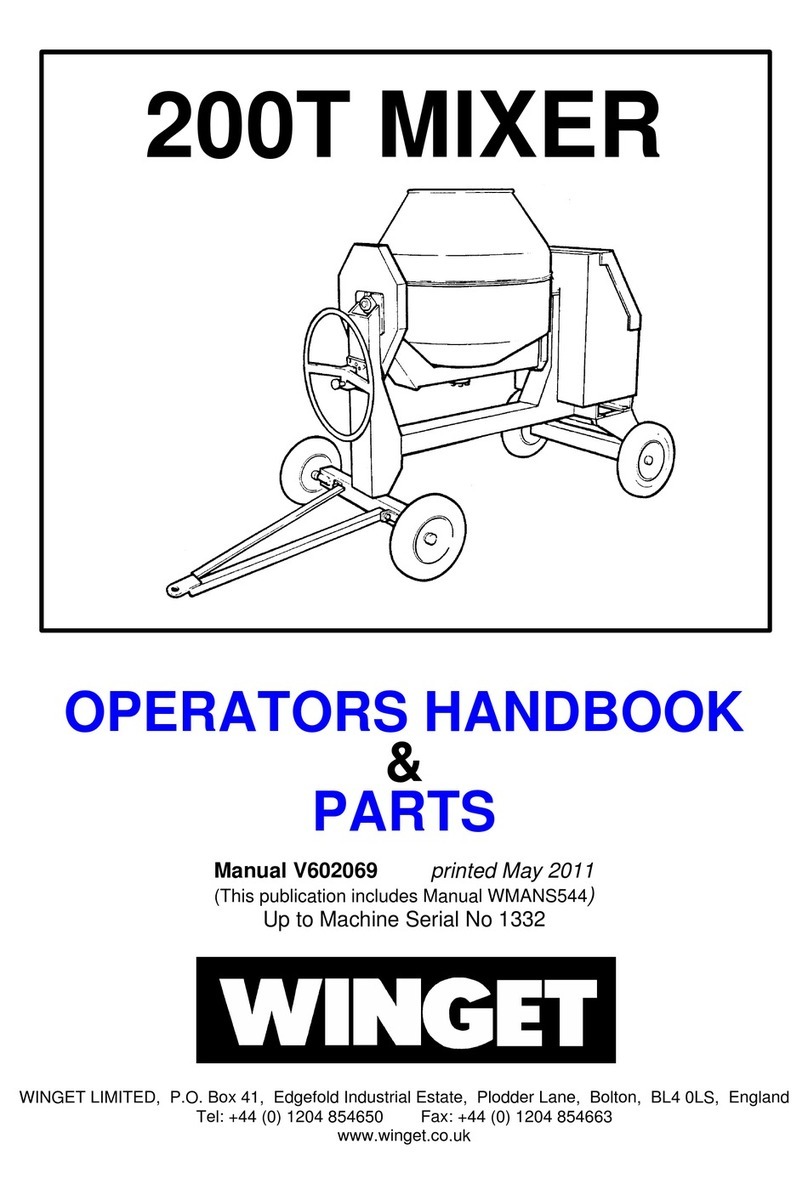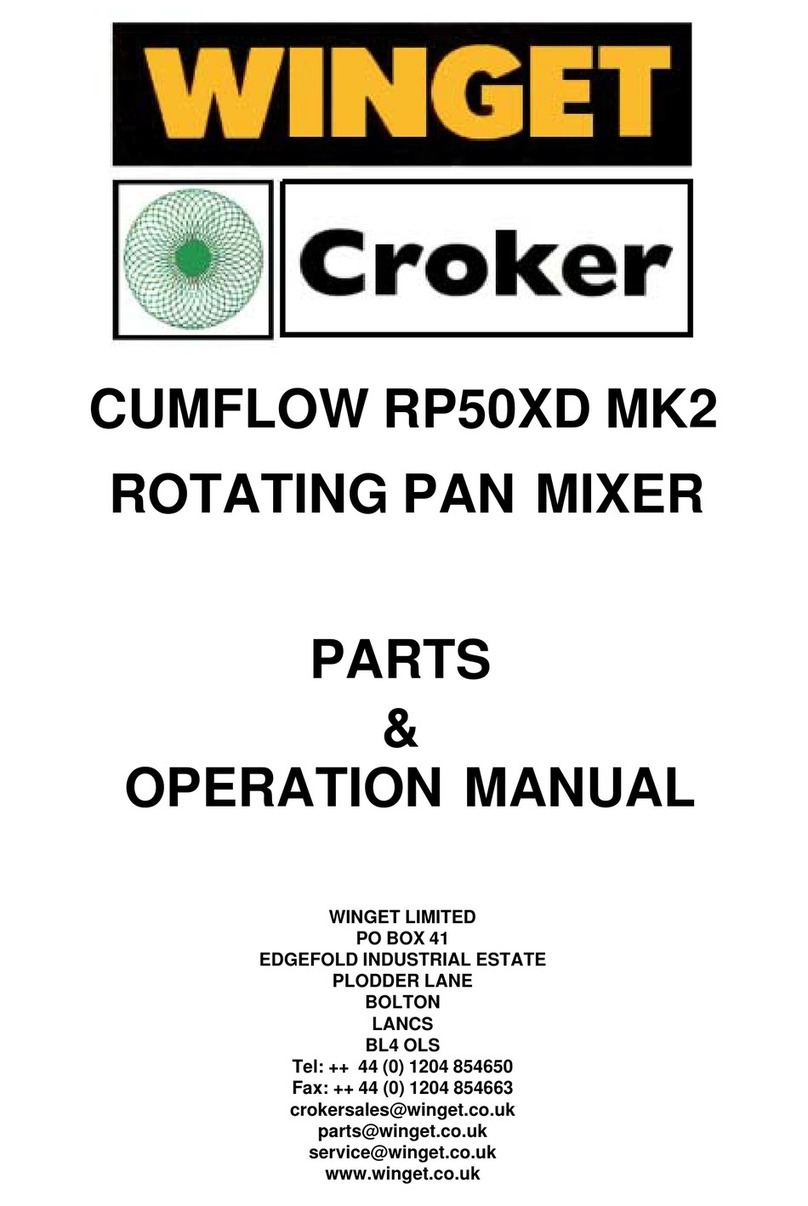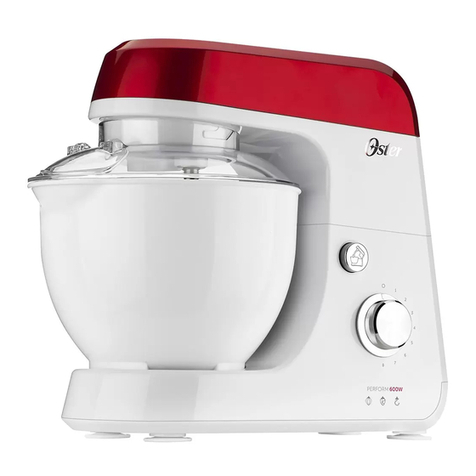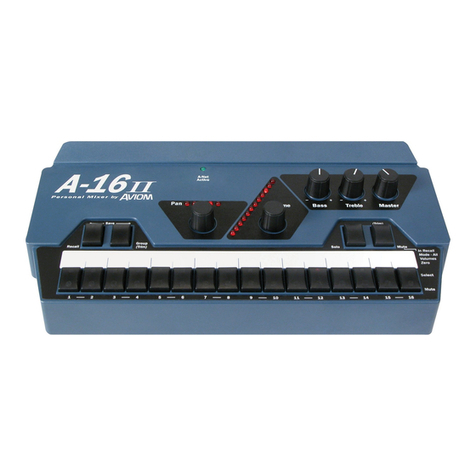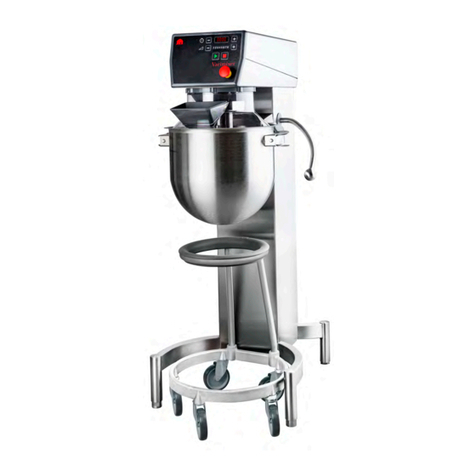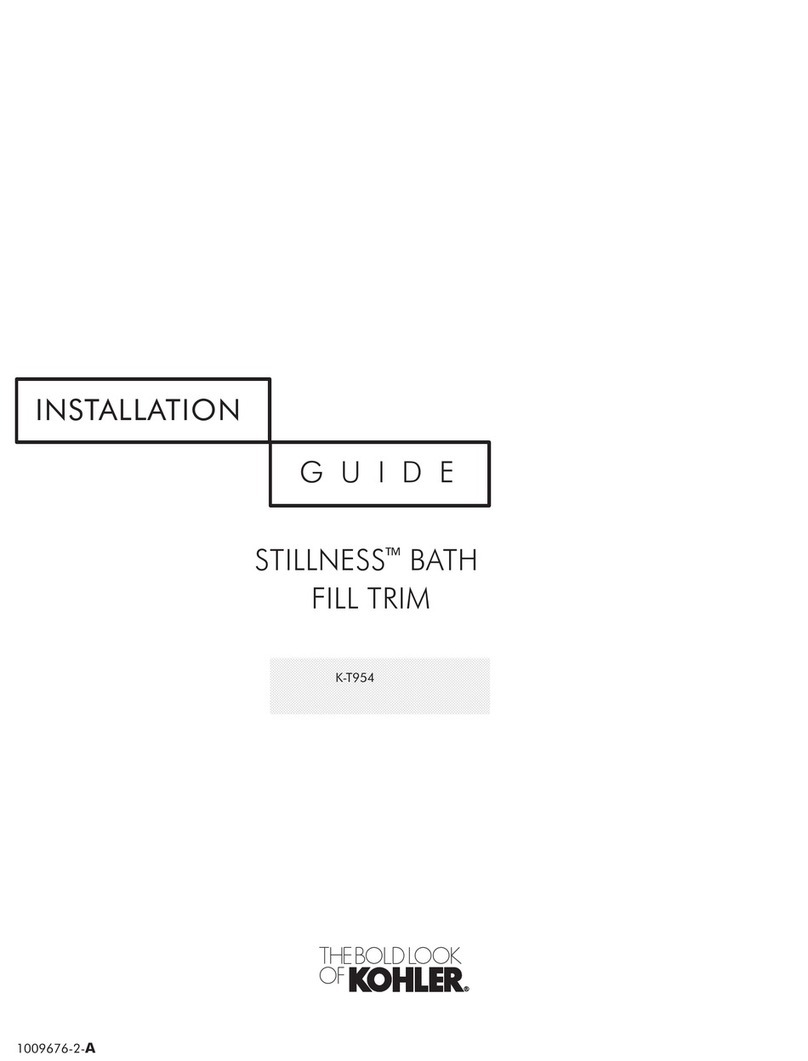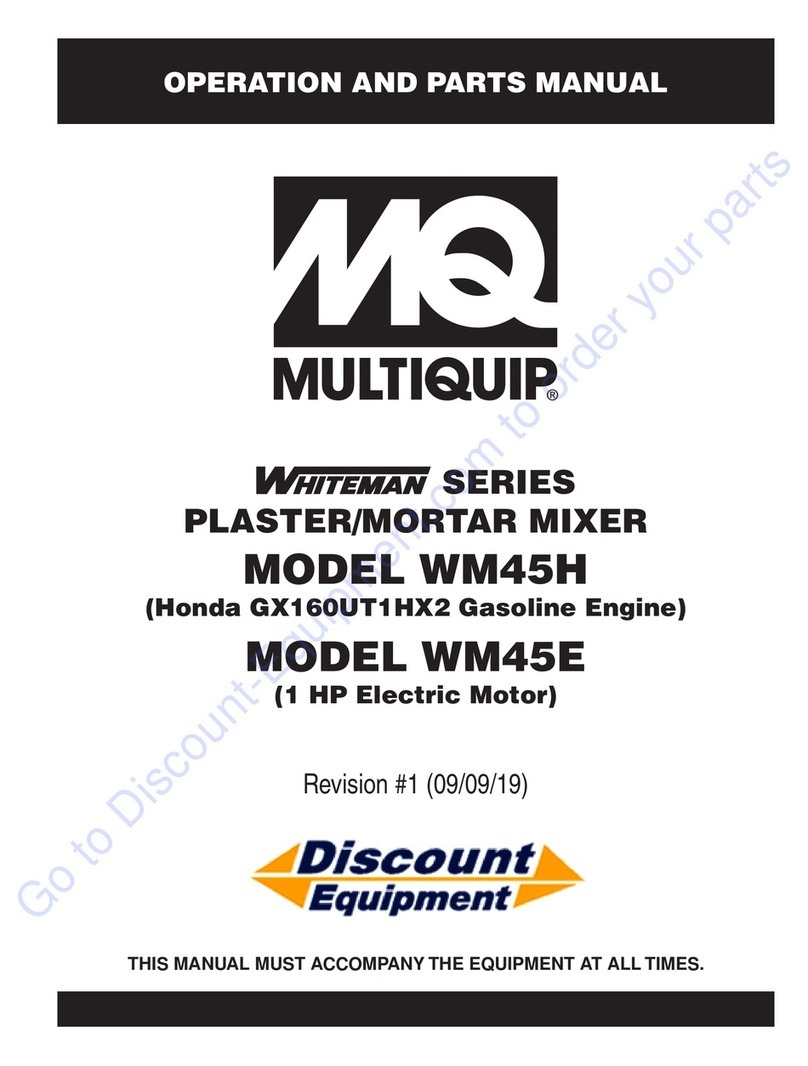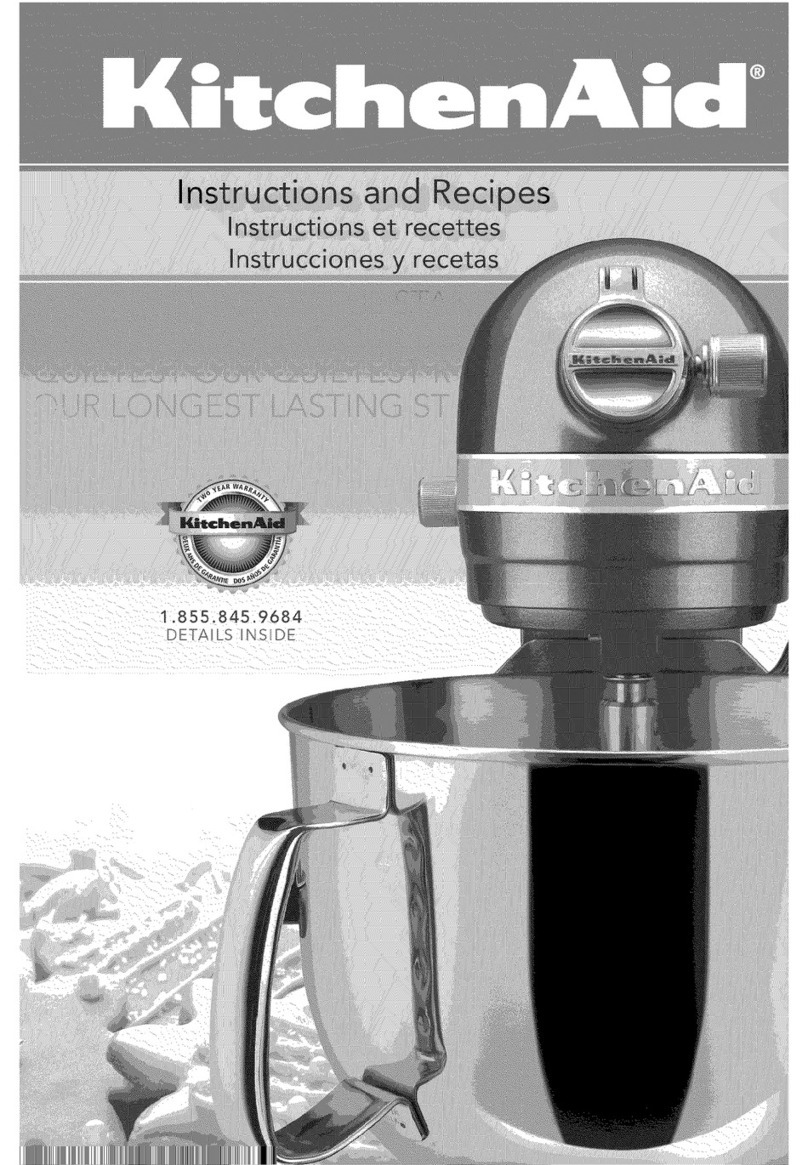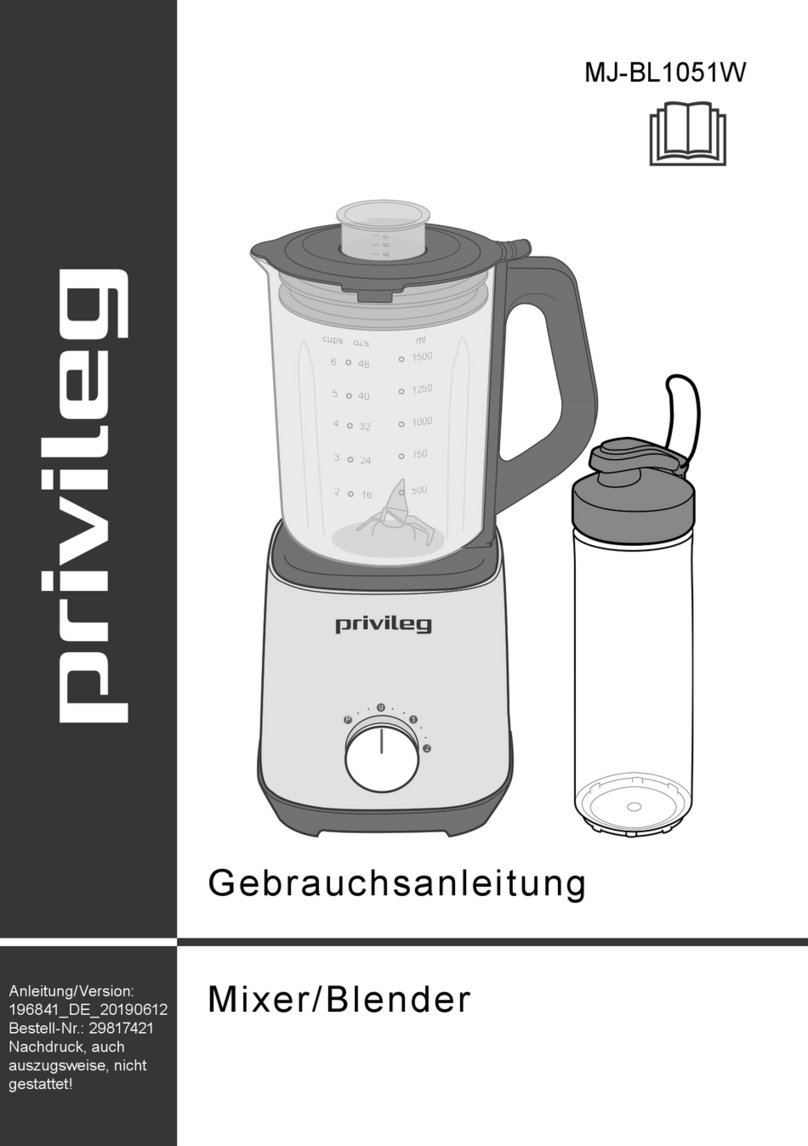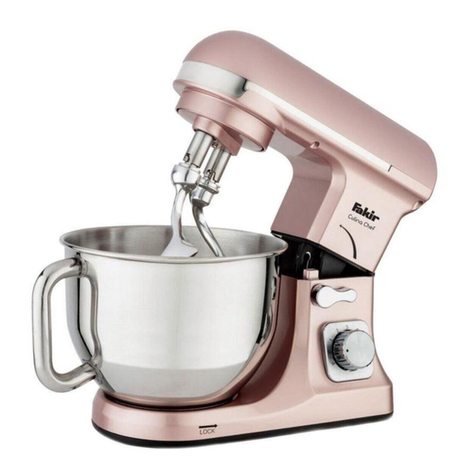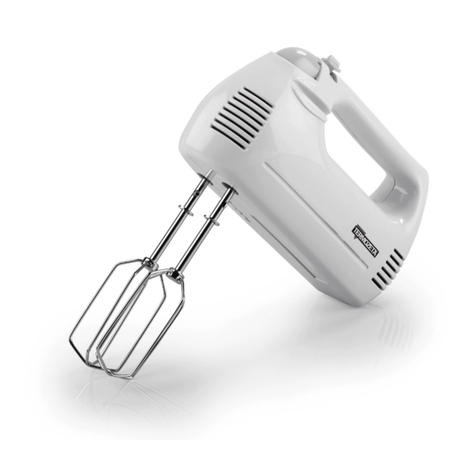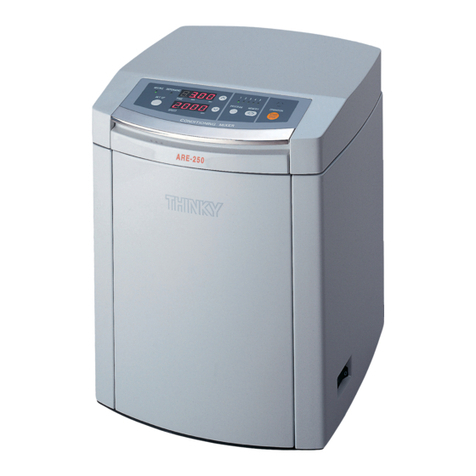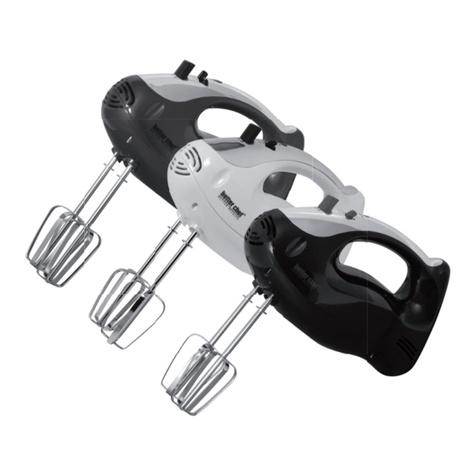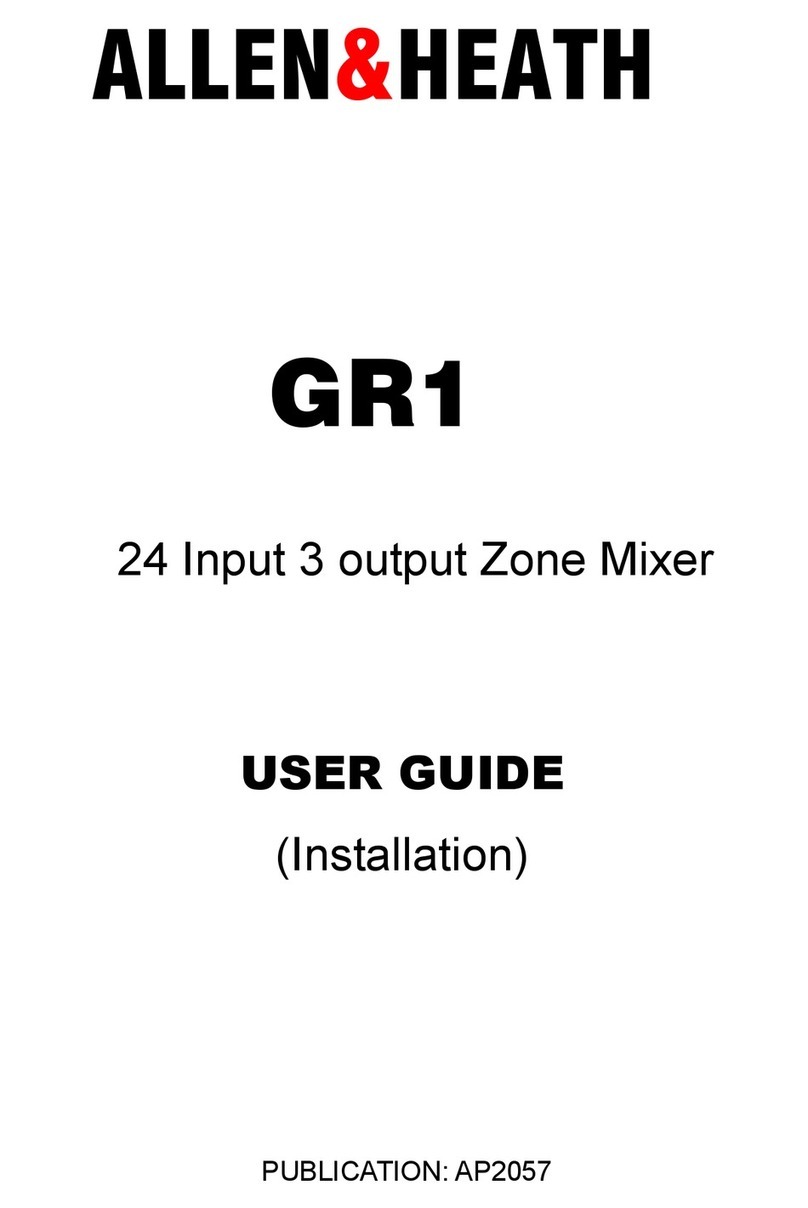
WORKSHOP MANUAL
Winget Mechanically Fed Mixers
Models: 200TM
From 1998
Place the bevel gear on the drum base and loosely retain with the setscrews and
washers, apply threadlock to the screw threads before inserting, smear a little anti-
seize compound round the circumference of the lower bearing seat in the bevel gear.
Lower the shaft through the bevel gear and using a suitable mallet or soft faced
hammer knock the shaft fully home, fit the large retaining circlip and finger tighten
the setscrews.
(Once the setscrews are tight it may be necessary to give the shaft end a sharp tap
to fully seat the bearings.) Check the gap between the bevel gear and drum base
(due to manufacturing tolerances) and pack using the shims around the
circumference of the gear in 6/8 positions. Tighten the retaining screws. Seal round
the edge of the bevel gear using a suitable sealer.
Drum Cone Replacement, Diesel TS/TR1 Engine
Clean hardened concrete or mortar from around the drum clip and bolts securing the
drum blades. Remove the bolts securing the blades to the drum cone and slacken
the bolts through the base. Cut through the drum clip and remove. Lift off the drum
cone. If necessary clean out the drum base. Clean any old silicone sealer and
hardened concrete from the drum flange.
The 200T and 200TM both utilise the same drum cone, however because the
TS/TR1 diesel version of the 200TM rotates in the opposite direction to the 200T and
electric
driven 200TM different drum blades are used. The standard cone must therefore be
modified prior to use as follows.
Using the special template/tool available from Winget under part number 513360100,
(a drawing is enclosed in the ‘special tools section) insert the template into the
existing holes in the cone and mark out the new upper holes.
Remove the template and drill the two new holes, weld up the existing upper holes,
the cone is now ready for fitment.
Run a generous bead of silicone sealer around the flange of the drum base and
inside the new drum clip. Leave the last 150mm of each end of the clip free from
sealer.
Using suitable lifting equipment lift the new drum cone in place lining up the holes in
the cone with those in the blades. Loosely refit in the bolts, nuts and washers. Fit
the new drum clip around the circumference of the two halves of the drum tapping in
place over the flanges using a soft faced hammer.
Attach the special drum clip tool placing the pins on the tool into the holes in each
end of the clip.
Using a suitable spanner tighten the drum clip to the drum until it is secure. Do not
overtighten the clip or the pins in each end of the tool will shear off. Slip the bridge
